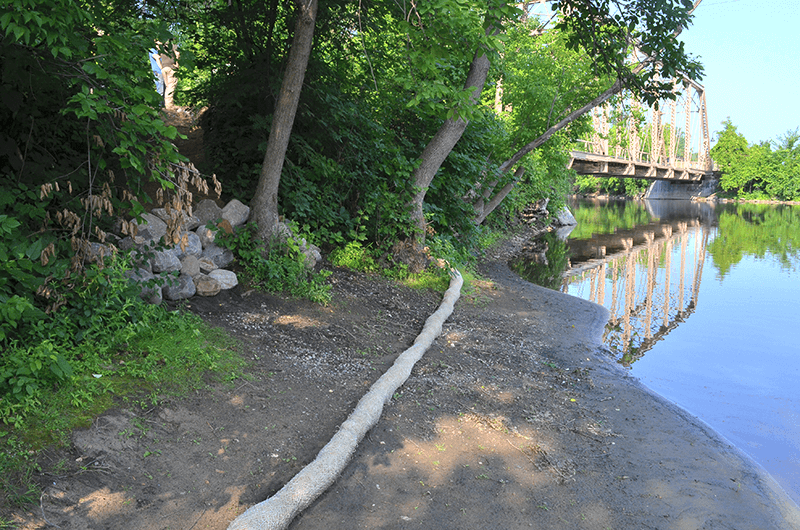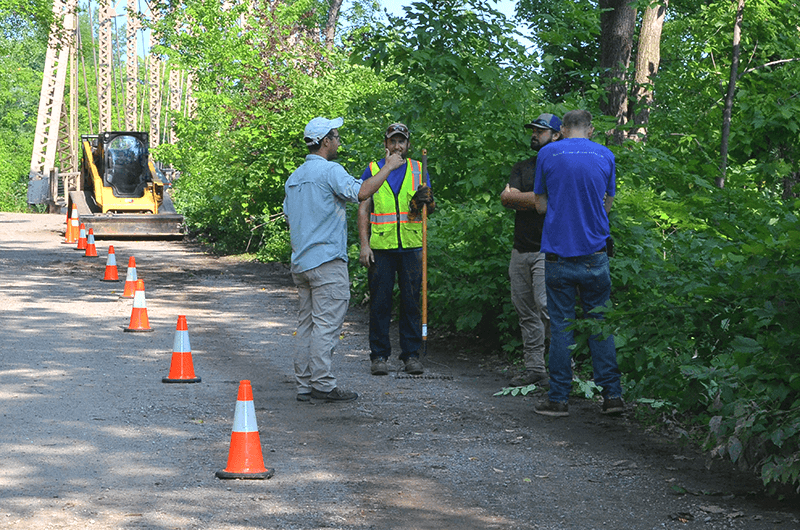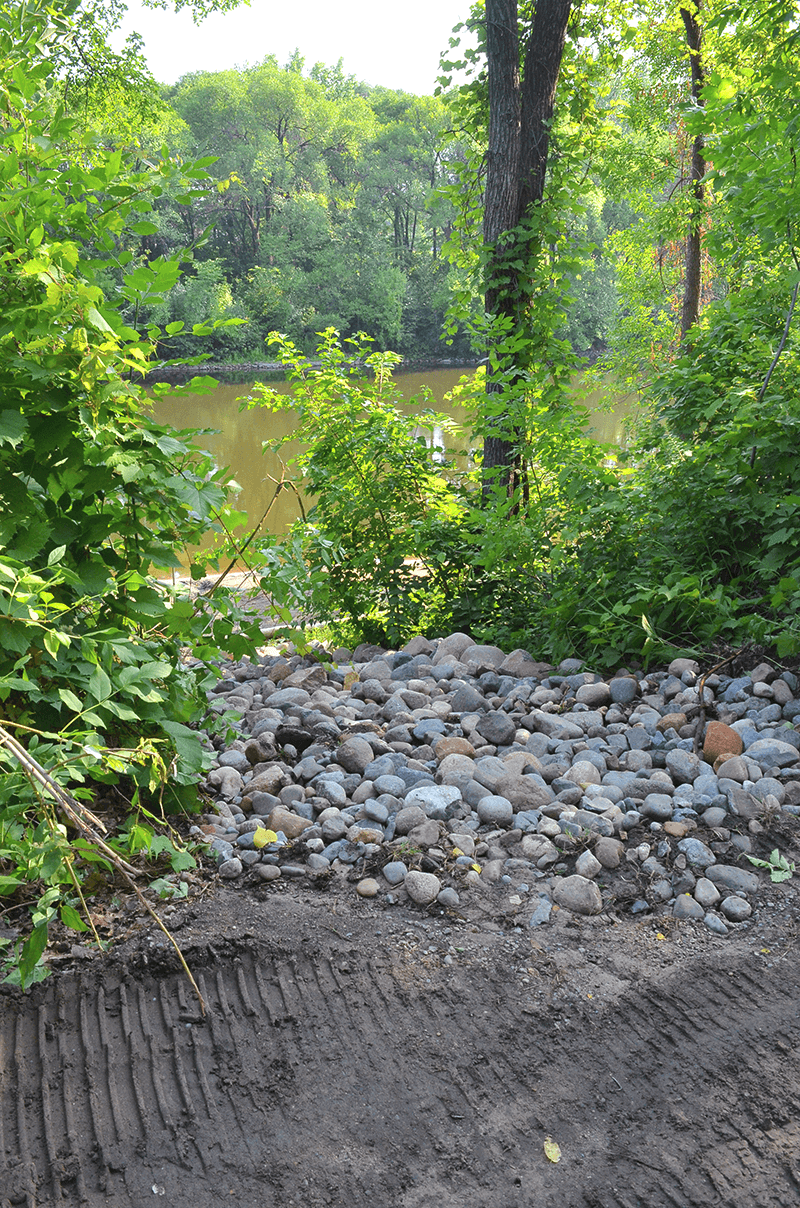A recent two-day erosion-control project by the Minneapolis Park and Recreation Board (MPRB) and Friends of the Mississippi River (FMR) highlighted the kind of measures needed to protect and sustain the fragile banks of a mighty river.
There’s a flat gravel trail along the northeast edge of Nicollet Island that once bore the weight of tracks and rail cars, a spur that delivered raw materials to the Graco Company. By the 1980s, the tracks were gone and the walking path that remained passed over an iron bridge to join up with Boom Island Park.
But the path’s popularity with walkers also threatened native plants, and years of people hiking down the slopes to the river itself created gullies that were enlarged by the flow of storm water. MPRB Project Manager Tyler Pederson said, “This project took a little time to get off the ground, but with FMR’s help and a little coordination we were able to create a solid project that helps reduce erosion and stabilize the river bank.”
Four of the five gullies between the trail and the river’s edge were backfilled with earth and planted with native grasses and wildflower seed mixes to stabilize the soil. The fifth gully was filled with large rocks to act as a rigid waterfall for the storm water runoff from the trail and the bluffs above. Silt logs were placed near the shoreline for further protection. The job was finished with a line of 12-15-inch boulders on the trail’s river side, to further discourage access to that stretch of water.
Pederson said the MPRB portion of funding came from its maintenance budget for the service area, with material costs of around $4,000. FMR ecologist and Northeast resident Alex Roth directed the installation by the contractor, drawing from various sources including the Mississippi Watershed Management Organization. Pederson noted, “Funding from Nicollet Island East Bank Neighborhood Association (NIEBNA) is helping in a few locations across the island, including erosion control and prairie maintenance at the site across the street from DeLaSalle High School’s athletic field.”
As for the future, the MPRB and other agencies will regularly monitor for water quality. Pederson added, “With FMR, we’ll be keeping an eye on erosion along the banks of Nicollet Island and this site. Our goal is to lessen the amount of gullying and erosion due to people and promote plants, as they are a natural stabilizer of steep slopes or areas susceptible to erosion.”
The public still has water access at a small stretch of beach just to the east of the iron bridge’s north end. It’s marked by a public access sign. At the base of the sign is a stuffed-animal memorial for six-year-old Isaac Childress III, who drowned there one year ago.
Below: Silt logs help prevent erosion on Nicollet Island. Alex Roth, ecologist with Friends of the Mississippi River, met with contractors doing the conservation work. Rock was laid on the erosion path to slow runoff to the river. (Photos by Mark Peterson)


